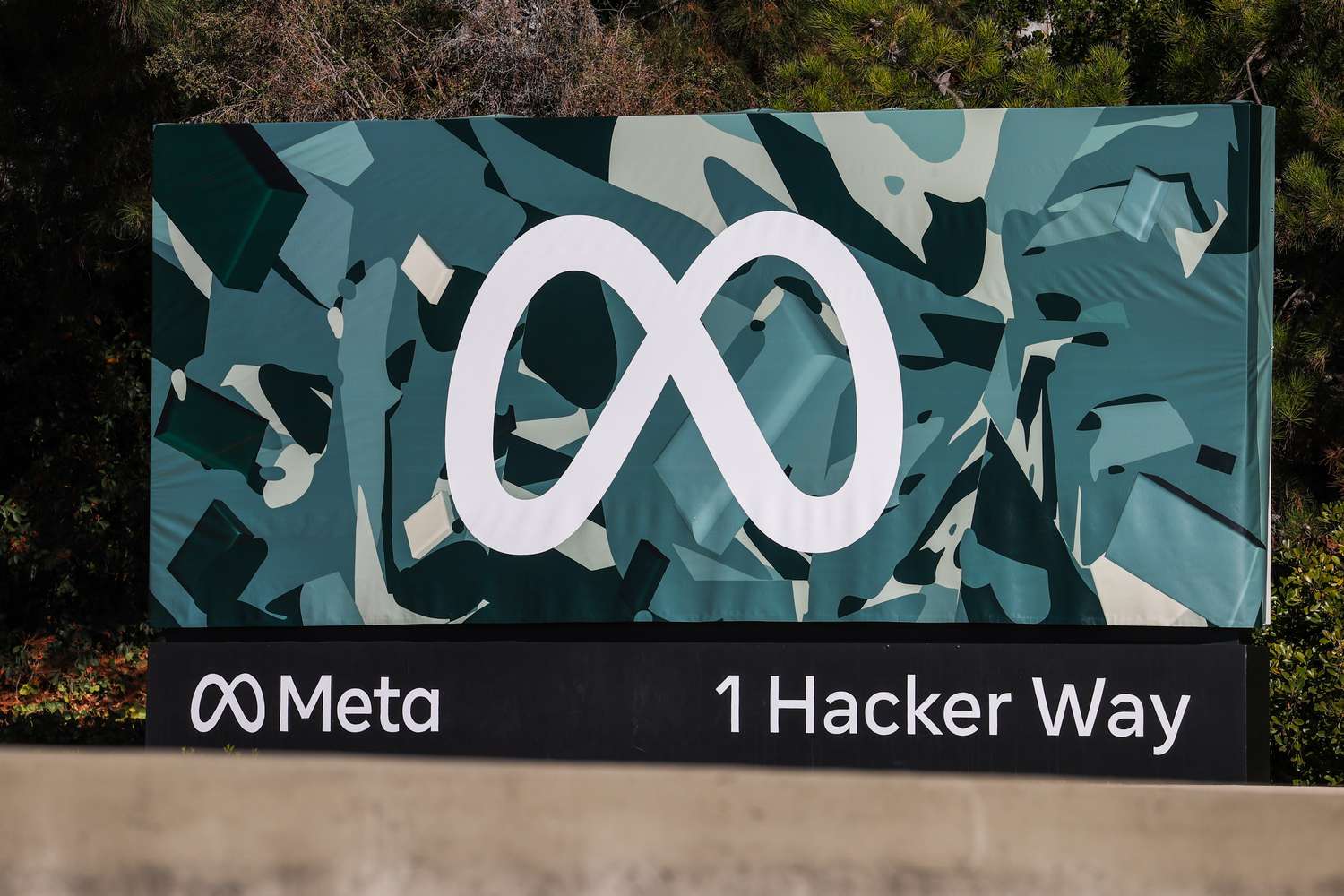
Social media changed how people interact with one another, how companies do business, and how they spend their ad budgets. As social media platforms gained tremendous momentum in the 21st century, Meta (META), formerly Facebook Inc., propelled itself to the top of the heap. It raced past rivals X Corp., formerly Twitter Inc., and LinkedIn Corporation in users and revenue. Below, we walk you through the advantages that have enabled it to sustain its dominant place long after mid-2000s rivals have disappeared.
Key Takeaways
- Facebook was launched in a Harvard dormitory in 2004 by Mark Zuckerberg, Eduardo Saverin, Chris Hughes, and Dustin Moskovitz. It went public in 2012.
- Meta reported that Facebook had 2.11 billion active monthly users as of December 2023.
- Meta had a market cap of $1.19 trillion as of mid-February 2024.
- In the last quarter of 2023, Meta had revenue of over $39 billion in advertising across its platforms.
- Facebook still overshadows most other social media in the U.S. and worldwide, as measured by number of users, advertising income, and just about any other metric.
Launched in a Harvard dormitory in 2004 by Mark Zuckerberg, Eduardo Saverin, Chris Hughes, and Dustin Moskovitz, the social media site that became Facebook initially had high school and college students in mind. It attracted nine million users in its first two years of existence. Turning down a $1 billion offer from Yahoo Inc. in 2006, Zuckerberg waited until 2012 to take the company public.
Meta’s market cap stands at $1.19 trillion as of mid-February 2024, and it reported 3.19 daily active people for all its platforms in December 2023. Advertising comprised 97.8% of the company’s total revenue in 2023. Facebook alone accounted for 2.11 billion daily active users in the fourth quarter of 2023.
The competitive advantages of Facebook are steep: its sheer number of users compared with LinkedIn (930 million users as of 2023) and X (353.9 million users worldwide estimated for 2023) means it can introduce new products or lead users across its platforms with far less effort than the monumental advertising campaigns others would need to launch such products.
What Are Facebook’s Advantages?
While Facebook’s numbers tell a story of unprecedented success, it has faced problems unique to being fully embedded in societies worldwide. Its reach and daily usage mean that content on its platforms can swing elections, that the data it collects involves a good portion of the world’s population, and that its advertising model has led to profound changes in news publishing and what we even think advertising is. The controversies that arrive daily for the platform are not yet a threat to its place as the leading social media app; it’s a testimony, instead, to how dominant it is. For good or bad, its algorithms are consequential worldwide because it’s so ubiquitous.
As a survivor of early millennium social media companies, Facebook is a company that, at times, has seemed dated. New rivals arrive and gain attention, only to fade when another comes on the scene and does the same. It’s a dated cliché that Facebook’s users are older and its days are numbered. And yet, that’s clearly not the case. After years of analysts predicting Facebook’s coming to an end with the rise of new platforms, it’s telling that an October 2023 Wired piece didn’t bother to argue that its users would soon leave for another platform but would have to leave social media altogether.
A Jan. 31, 2024, report from Pew Research, the U.S. demographic and polling firm, shows its leading place in the market. Facebook is not just the second most popular platform overall, after YouTube, with 68% of American adults saying they use the platform, but it’s also popular among the youngest adults: 67% of adults 18 to 29 report using Facebook, compared with 62% for TikTok. (About 78% report using Instagram, a “loss” Meta will take given it’s another one of its platforms.) As these young adults age, they are likely to stick with the platform, just as their older peers have.
Facebook’s Success
Facebook’s success has translated into its stock price and earnings reports. In the five years leading up to mid-February 2024, Meta’s stock had increased 188.1%, and its cumulative annualized growth rate over the same period was 23.6%.
Facebook’s advantages span from its vast user base to its sophisticated advertising and analytics tools, making it a powerful platform for both personal connectivity and business growth. Facebook benefits from a strong network effect, where the value of the platform increases with each additional user. This creates a barrier to entry for competitors, making it challenging to dethrone Facebook’s dominant position. Let’s walk through some of its fundamental advantages over its rivals, before looking specifically at its advertising models and mobile apps.
- Advertising: One of Facebook’s standout features is its highly sophisticated advertising platform. Advertisers can target users based on age, interests, behavior, location, and more. Sure, it’s uncanny when you chat on Facebook Messenger about needing socks, and now you’re getting ads for all kinds of foot-related gear. However, this granular targeting makes advertising on Facebook highly effective and drives significant revenue for the company—and away from rivals both in social media and for network and cable television.
- Analytics: Facebook provides detailed analytics through Insights, giving page owners comprehensive data on their audience’s behavior, post engagement, reach, and the performance of paid campaigns. This information is crucial for businesses and marketers to refine their strategies. Besides Google’s search, it’s harder to think of a company whose analytic reports mean so much to such a cross-section of companies and advertisers.
- Community engagement: With features like Groups, Events, and Pages, Facebook excels at community building. Users can join groups or follow pages that align with their interests, while businesses and organizations can create communities around their brand, hoping to foster loyalty and engagement.
- Content sharing: Facebook supports a wide variety of content formats, including text posts, photos, videos, live videos, and stories. This diversity enables users and brands to tailor their content to their audience’s preferences. Meanwhile, other forms of social media are centered on videos, images, or texts and links.
- Cross-platform pollination: Meta’s ownership and its integration with other popular platforms like Instagram and WhatsApp allow for marketing strategies that run across several of Meta’s channels simultaneously, increasing reach and engagement.
- Ease of use: Despite its vast array of features, Facebook remains user-friendly for both individuals and businesses. Its accessibility ensures that people of all ages and tech-savviness levels can use the platform.
- Extensive global and cross-generational reach: Facebook has a massive global user base, connecting billions of people worldwide. This extensive network makes it the platform for individuals to stay in touch with friends and family across the globe and offers businesses a vast audience for their marketing efforts. As the Pew Research report shows, Facebook has the widest reach across many age groups, so you’re not just in touch with those your age through Facebook, but parents and children if you have them, too.
- Marketplace and ecommerce integration: Facebook Marketplace and its other ecommerce initiatives allow individuals and businesses to sell products directly through the platform. This can mean a seamless shopping experience without having to leave the platform.
- New features: Facebook has the capital to produce new features like Facebook Live, 360-degree photos and videos, and augmented reality filters to keep the platform up to date whenever new rivals enter the scene.
Advertising
Facebook is one of the leaders in targeted advertising, transforming how businesses connect with their audiences. With over 8 million advertisers using its platform, Facebook has become an indispensable tool for digital marketing, especially for small businesses. In 2023, Meta reported a staggering $131 billion in advertising revenue, underscoring the platform’s colossal impact on advertising.
At the heart of this is its unparalleled use of data analytics to enable precision targeting. Gone are the days of broad, demographic-based campaigns: advertising during soap operas to reach women, etc. Today, Facebook’s advertising model relies on customization, allowing businesses to reach specific segments of its vast user base with tailored messages. This precision is powered by Facebook’s extensive data collection, including its ubiquitous single sign-on feature integrated into countless third-party websites. This integration enables advertisers to track consumer behavior across the web, from purchases to page views, and craft highly personalized advertising.
However, Facebook’s use of data for advertising has continually placed it under public and regulatory scrutiny. The platform’s approach to user privacy and data handling practices has sparked debates about its digital advertising and concerns about one company having such immense power. In response to these concerns, Facebook has introduced initiatives aimed, it says, at increasing transparency and giving users more control over their data. In recent years, Facebook has rolled out more transparent data usage policies and made it easier for users to control what data they share and how it is used. This includes tools to see and manage the data that Facebook collects about them and improvements to the platform’s privacy settings. In response to concerns over election interference and the spread of misinformation, Facebook created stricter rules on political advertising. Advertisers now need to go through a verification process to run political ads, and there’s a publicly accessible archive where people can see the details of political ads, including their reach and funding. To combat misinformation by partnering with third-party fact-checkers and using AI to detect and reduce the spread of false information. The platform also introduced labels for posts that have been fact-checked, providing users with more context.
As the platform ages, it’s remained a vital space for businesses using it for engagement. Once an advertiser defines its target audience, it can create ads in various formats, including images, videos, slideshows, and carousel ads, to engage users in different ways. These ads can appear in several places across the platform, such as the News Feed, Facebook Stories, Marketplace, and even outside Facebook on Instagram or the Audience Network—mobile apps and websites where Facebook ads can also be displayed.
Facebook’s advertising model operates on an auction system, where advertisers bid for ad placement based on brand exposure, website traffic, or conversions. The cost of advertising depends on how many are competing for the same target audience, the advertiser’s budget, and bid strategy.
Mobile Trends
In the early 2010s, Facebook transitioned from a desktop-centric platform to mobile-first. Now, the majority of its users access the platform via mobile devices. This shift has led to redesigning its mobile app to ensure faster loading times and intuitive navigation. The app’s interface is updated frequently to evolve enough (while staying usable for veterans) to keep up with changes in user preferences.
Beyond its primary app, Facebook has expanded its mobile ecosystem by developing and acquiring other applications, such as Messenger, Instagram, and WhatsApp. Each app serves distinct user needs, from instant messaging to photo and video sharing, broadening Facebook’s mobile footprint. This diversified app strategy not only caters to different aspects of social connectivity but also allows Facebook to capture a wider audience across various demographics and geographic locations.
Facebook’s Messenger app launched in 2011 and has been a major part of its mobile strategy. Messenger had an estimated 933 million monthly users in 2023. Rather than battle mobile market competitor WhatsApp, Facebook acquired its rival in 2014 for $19 billion, bringing one billion users into the fold. However, the European Commission forced it to remove functionality from the Messenger app. Previously, Facebook and Instagram users could use the app to message each other, but that feature was turned off in mid-December 2023.
Another challenge lies in shifting user demographics and platform engagement trends. Younger audiences have gravitated toward newer platforms like TikTok, signaling a potential shift in social media habits. Facebook’s ability to retain and engage a younger demographic while serving its existing user base will be crucial for remaining relevant. It has sought to counter TikTok and other such platforms by introducing Reels.
On the horizon, Facebook’s rebranding to Meta reflects its bet on the metaverse as the next frontier in social connectivity. This virtual reality space offers prospects for growth, from new forms of online interaction to opportunities in digital commerce, education, and entertainment. However, the billions the company has spent has led only to losses, about $16 billion in its virtual and augmented reality business, Reality Labs, in 2023. The success of this venture will depend on Meta’s ability to get people to adopt, which means creating more compelling uses than it’s found thus far.
Facebook’s ecommerce features like Facebook Shops and Marketplace are part of its hope of growing as an advertiser of goods and a source of them. Yet, its revenue remains advertising, with more than 98% coming from that part of its business.
Is Facebook Still a Good Platform?
Both advertisers and users seem to think so, with 2 billion monthly active users and billions in ad revenue. Facebook’s varied demographics and targeted ad technology make it a go-to for business advertising.
What Are the Top 3 Social Media Platforms?
In active users, Facebook outpaces other platforms, although YouTube and WhatsApp also have about 2 billion users each.
What Makes Facebook Different From Other Social Media Networks?
One of the big differences is Facebook’s huge audience, which is almost three times larger than X’s and LinkedIn’s combined. It also provides a strategic set of tools, including robust user data, for businesses to reach that audience.
The Bottom Line
Facebook’s versatility sets it apart in social media, offering different content, from photos and videos to instant messages and status updates. This broad appeal distinguishes it from platforms like LinkedIn, which primarily serves professional networking needs, and others that target niche demographics.
Facebook has built a diverse and expansive user base, making it a prime destination for advertisers. With over 2 billion active users each month, the platform has network advantages that have long made it difficult to unseat despite the billions rivals have spent trying to do so.
This post was originally published on this site be sure to check out more of their content








